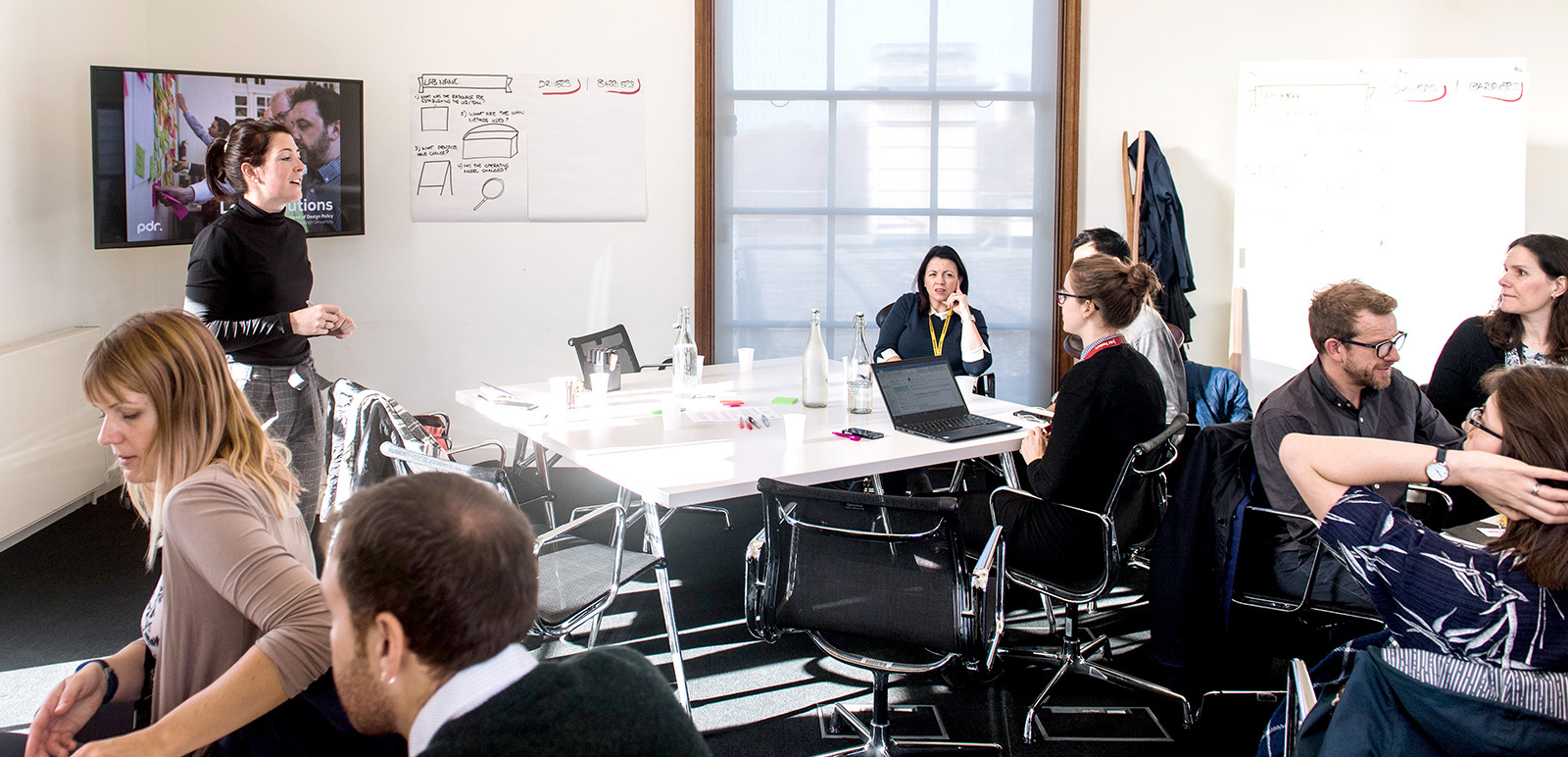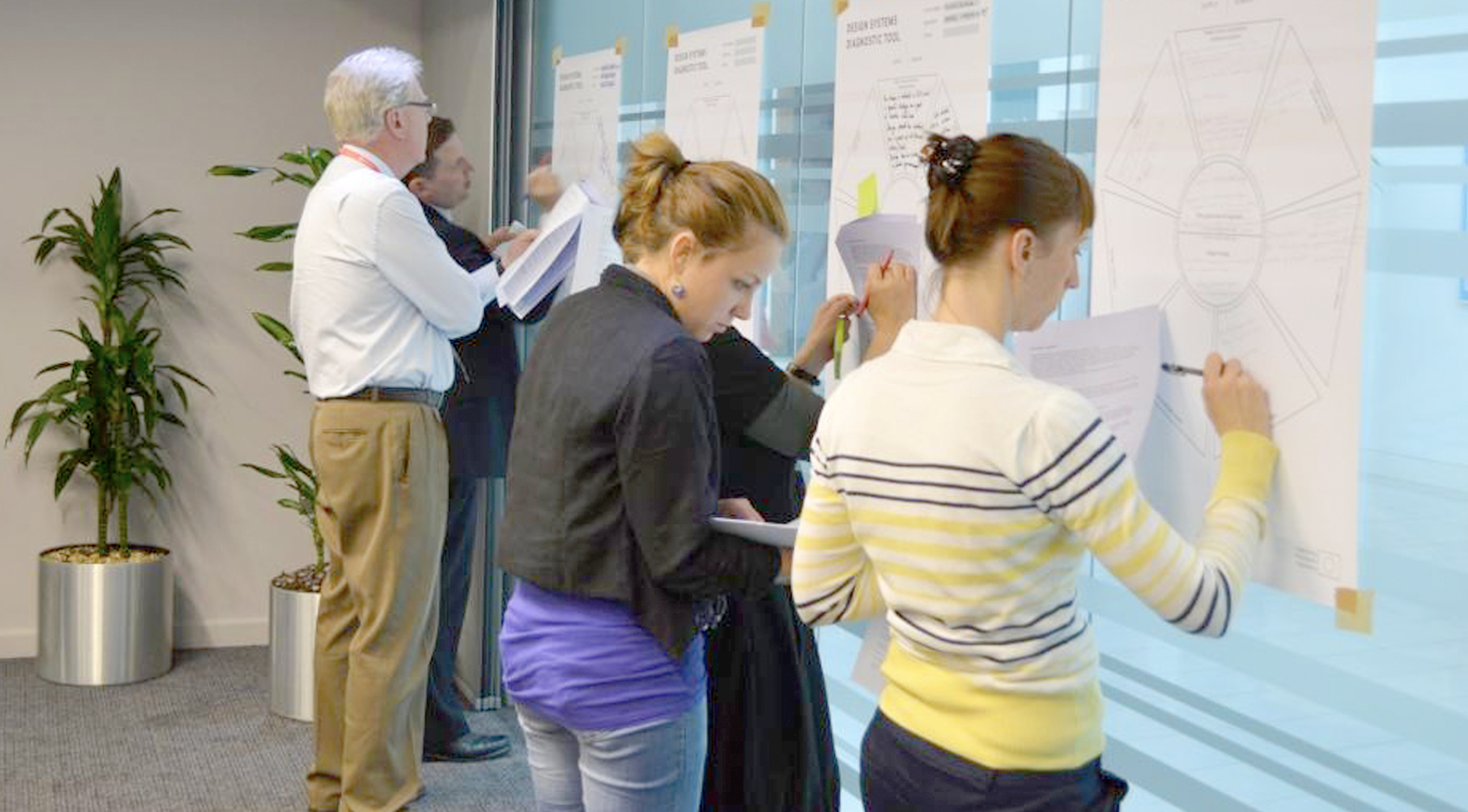Prof. Anna Whicher Publications
PDR Research
- Focus:
- デザイン&イノベーション・ポリシー
Co-design, evaluation and the Northern Ireland Innovation Lab
Whicher, A. and Crick, T. (2019) 'Co-design, evaluation and the Northern Ireland Innovation Lab', Public Money & Management, 39(4), pp.290-299. DOI: 10.1080/09540962.2019.1592920.
Around the world there are more than 100 policy labs—multi-disciplinary government teams developing public services and policies using innovation methods to engage citizens and stakeholders. These policy labs use a range of innovation methods and approaches, including co-production, co-creation, co-design, behavioural insights, systems thinking, ethnography, data science, nudge theory and lean processes. Although the methods may vary, one element is consistent: policy labs actively, creatively and collaboratively engage the public and a wide range of stakeholders in jointly developing solutions. The Northern Ireland Public Sector Innovation Lab (iLab) is part of a growing UK and international community of policy labs using co-design to engage with users for value co-creation, aiming to improve public governance by creating a safe space to generate ideas, test prototypes and refine concepts with beneficiaries. Drawing on iLab’s experience, this paper explores three questions: What are the main determinants of effective co-design? What are the unintended consequences of co-design? And what lessons can be learned from iLab and shared with other policy labs?
Find more information here: https://doi.org/10.1080/09540962.2019.1592920
Design Fictions: A Tool for Debating Societal, Legal and Ethical Aspects of Personal and Pervasive Health Systems
Tsekleves, E., Darby, A., Whicher, A. and Swiatek, P. (2017) 'Design Fictions: A Tool for Debating Societal, Legal and Ethical Aspects of Personal and Pervasive Health Systems'. In: Giokas, K., Bokor, L. and Hopfgartner F. (eds) eHealth 360°. Lecture Notes of the Institute for Computer Sciences, Social Informatics and Telecommunications Engineering, vol 181. Springer, Cham. DOI: 10.1007/978-3-319-49655-9_48.
The potential benefits offered by health-related technologies are counterpoised by the societal, legal and ethical challenges concomitant with the pervasive monitoring of people necessitated by such technological interventions. Through the ProtoPolicy research project we explored the production and use of design fictions as a tool for debating the societal, legal and ethical dimensions of personal health systems. Two design fictions were co-created and tested in a series of design workshops with community groups based in Lancashire and Cornwall, UK. A thematic analysis of a debate among older people from the Lancaster group on the Smart Object Therapist design fiction highlighted societal and ethical issues relevant to personal health system design. We conclude that ethics like ‘usability’ may be usefully based on engagement with directly or indirectly implicated publics and should not be designed into innovation by experts alone.
Find more information here: https://doi.org/10.1007/978-3-319-49655-9_48

Uncovering Human Needs through Visual Research Methods: Two Commercial Case Studies
Hare, J. D., Beverley, K., Begum, T., Andrews, C., Whicher, A., Walters, A. and Ruff, A. (2018) 'Uncovering human needs through visual research methods: Two commercial case studies', Electronic Journal of Business Research Methods, 16(2), pp.55-102
This paper presents two respective case studies which demonstrate how visual research methods can elicit a deep understanding of the needs of potential end users and drive product and service development at a strategic business level. The engagement of users in the development of products, services and systems has been explored by a number of design disciplines in the last few decades including but not limited to product design, human-computer interaction, systems design and service design. Each has recognised the importance of understanding the humans who will potentially be using their design outcome. Notable research methods include ethnographic inspired research, in-context and lab-based observations, interviews and the user trial of prototypes. However, these approaches also have their critics and limitations ranging from the need for incremental adjustment rather than radical design, being time-consuming and costly processes, and the large volume of ‘messy data’ being collected contributing to the complexities of ‘wicked problems’. In response to some of these limitations, a number of research methods have emerged which are more arts-based in nature i.e. the act of creating allows the researcher to extract ‘deeper’ human needs (tacit and latent needs) in a drastically shorter timescale. To fully utilise such approaches it is essential that a study be designed which amalgamates diverse research methods. The two case studies presented in this paper employ a variety of traditional and generative design research methods in live commercial projects. The specific project outcomes are retained under Intellectual Property and, as such, this paper critically focuses on the value of the process and methods utilised, their relationship to the wider concept of arts-based research, and discusses issues related to their application in commercial work.
Find more details here: https://academic-publishing.org/index.php/ejbrm/article/view/1374
Design for circular economy: Developing an action plan for Scotland
Whicher, A., Harris, C., Beverley, K. and Swiatek, P. (2018) 'Design for circular economy: Developing an action plan for Scotland', Journal of Cleaner Production, 172, pp.3237-3248
In Europe, concern regarding environmental degradation, resource scarcity and price volatility brought about through traditional linear production methods, coupled with the need to enhance the global competitiveness of European business has led to an increased focus on creating the framework condi- tions for a transition to a circular economy. Transition from a linear to circular economy is not straightforward and there are very few existing examples of the transposition of the EU's ‘ Circular Economy Action Plan ’ into national or regional policy. This article reports on a project undertaken in Scotland to develop tangible and realistic policy proposals, aligning market and government needs in order to create favourable conditions for the public and private sector to adopt circular principles. Established theory on innovation ecosystems was adapted to map a ‘ Design for a Circular Economy ’ ecosystem in Scotland. Actions to build on system strengths and address weaknesses were co-developed through interviews, workshops and peer review with key stakeholders in the ecosystem. Twelve actions were developed addressing four major themes: business support and fi nance; skills and education; promotion and awareness; and policy and regulation. The actions varied in scope from groundwork, through instigating change to systemic change. The article concludes by summarising a number of good practices drawn from the experience in Scotland that may be used in other countries looking to develop a circular economy policy framework.
Find more information here: https://doi.org/10.1016/j.jclepro.2017.11.009

Design ecosystems and innovation policy in Europe
Whicher, A. (2017) 'Design ecosystems and innovation policy in Europe', Strategic Design Research Journal, 10(2), p.117-125
In 2015, 15 of the 28 European Member States had design included in national innovation policy and between 2012 and 2016, design action plans have been adopted by governments in Denmark, Estonia, Finland, France, Ireland and Latvia as well as by the European Commission. Long misunderstood by companies and government as styling, design is a user-centred approach to problem-solving that can be applied across the private and public sectors. Design has attracted the attention of policy-makers as a factor for innovation as part of a paradigm shift in Europe where the remit of innovation policy is expanding. In the same way that innovation policy is based on an analysis of the Innovation Ecosystem, design researchers have demonstrated that design policy should be based on an analysis of the Design Ecosystem. Finland was the first country to adopt the concept of a National Innovation System to inform innovation policy in 1992 and it was also the first country to adopt the concept of a Design Ecosystem to inform its design policy in 2013. The European Commission’s Action Plan for Design-driven Innovation encourages all European countries to integrate design into innovation policy and develop design action plans. However, this raises the fundamental question of how government can effectively develop design policy. Through a consensus building process with policy-makers, academics and design centre managers, various components of a Design Ecosystem were explored and tested. The processes resulted in a consolidated Design Ecosystem model with nine components: (1) users, (2) support, (3) promotion, (4) actors, (5) designers, (6) education, (7) research, (8), funding, and (9) policy. The Design Ecosystem model advocates that a policy should consider every aspect of the ecosystem to ensure a balance between supply of and demand for design expertise.
Find more information here: https://revistas.unisinos.br/index.php/sdrj/article/view/sdrj.2017.102.04
Mapping design for innovation policy in Wales and Scotland
Whicher, A. and A. Walters (2017) 'Mapping design for innovation policy in Wales and Scotland', The Design Journal, 20 (1), pp.109-129
In 2014, design featured in 15 of the 28 European Member States’ innovation policies. Design strategies were in operation in Denmark, Estonia, Finland, France and Latvia. The European Commission has also developed an Action Plan for Design-driven Innovation. While design is gathering momentum as a driver of innovation in EU and national policy, there is a gap at regional levels. In Wales and Scotland there is infrastructure to support enterprises to use design, so arguably there is an opportunity for them to lead the regional design policy agenda in Europe. However, this raises the question of how to develop effective policies for design. Innovation policy is based on analysis of the Innovation Ecosystem; can the concept of Design Innovation Ecosystems be useful for design policy development? Through four Design Policy Workshops and surveys in Wales and Scotland, this article presents the concept of Design Innovation Ecosystems as an approach to inform policy-making for design-driven innovation.
Find more information here: https://doi.org/10.1080/14606925.2016.1233006

